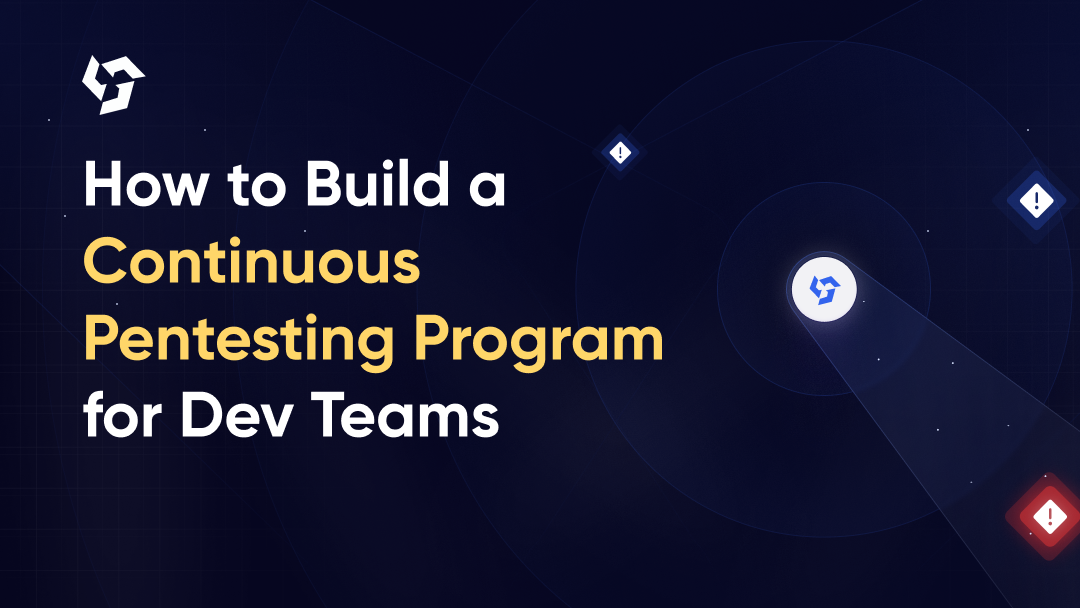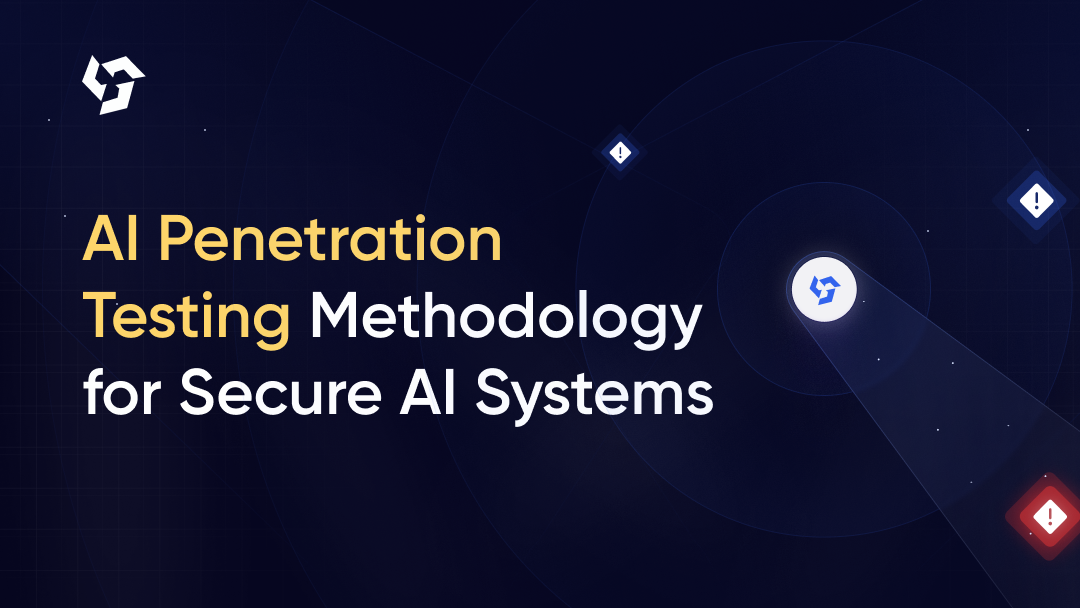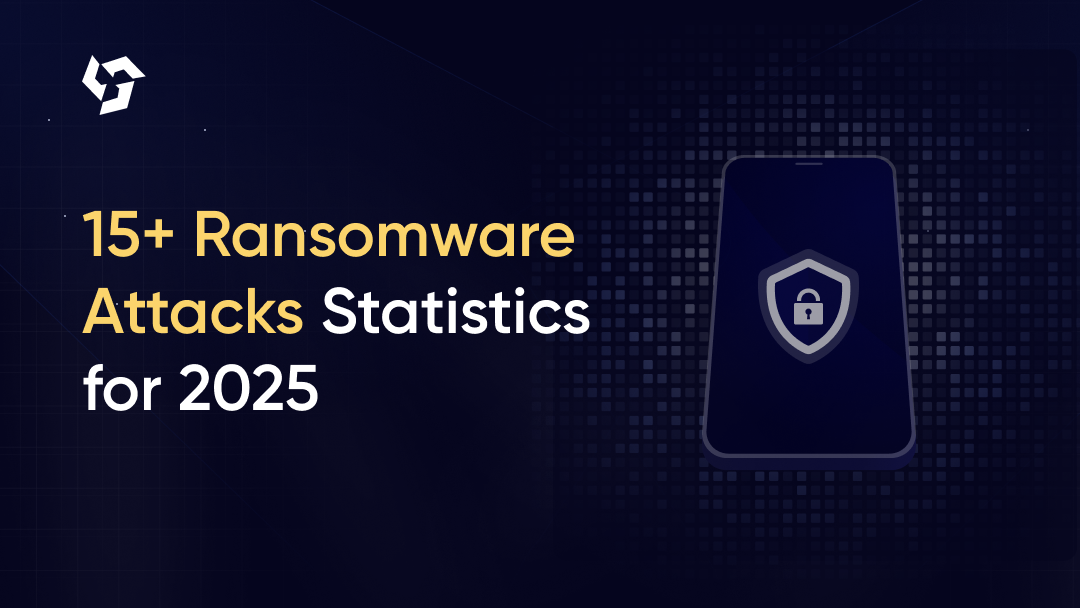Security maturity is often misunderstood. Organizations measure it by the sophistication of their testing tools or the volume of security assessments they conduct. They showcase lengthy vulnerability reports and comprehensive audit findings. They invest heavily in discovery while remediation languishes.
The industry fixates on finding issues rather than fixing them. Vendors compete on detection capabilities and reporting features. Security teams celebrate thorough assessments. Meanwhile, critical vulnerabilities remain unpatched for months, and exploitable weaknesses persist across environments.
Real attackers don't care about your scan results. They exploit unresolved weaknesses regardless of whether those weaknesses appear in reports. A critical vulnerability documented six months ago but still unfixed presents the same risk as one never discovered. The difference is that documented issues represent known execution failures.
TL;DR: Security maturity isn't measured by how many vulnerabilities you find. It's measured by how effectively you fix them. Real attackers exploit unresolved weaknesses, not scan results. Organizations that execute disciplined remediation reduce breach probability. Those that simply generate findings create an illusion of safety.
Security Remediation vs Vulnerability Identification: Understanding the Critical Difference
Modern security programs have an abundance of tools that generate findings. Vulnerability scanners, penetration tests, code analysis platforms, and compliance audits all produce detailed reports. Organizations drown in security data while struggling to take meaningful action.
Disciplined remediation processes remain scarce. Few organizations have structured workflows for prioritizing fixes, assigning clear ownership, and verifying closure. Security teams identify hundreds of issues while engineering teams lack capacity or context to address them systematically.
Identification without closure creates an illusion of safety. Leadership sees comprehensive security reports and assumes the organization understands its risks. They believe documentation equals protection. In reality, unresolved findings represent growing technical debt that attackers will eventually exploit.
The gap between identification and remediation defines organizational vulnerability. A company that finds and fixes 50 issues demonstrates greater maturity than one that identifies 500 but resolves only a fraction.
Identification vs Remediation: A Critical Comparison
| Aspect | Identification | Remediation |
|---|---|---|
| Meaning | Finding security issues | Fixing security issues |
| Primary Value | Awareness of vulnerabilities | Risk reduction and elimination of exploitability |
| Output | Reports, scan results, findings | Reduced attack surface, closed vulnerabilities |
| Attacker Impact | No documented risks remain exploitable | Direct attack paths are eliminated |
| Resource Focus | Security tools and assessments | Engineering time and systematic fixes |
| Success Metric | Number of findings discovered | Time to fix and the recurrence rate |
What Security Remediation Actually Means in Practice
Effective remediation goes beyond applying patches or closing tickets. It means reducing exploitability across your environment in ways that genuinely limit attacker capability.
Remediation eliminates pathways attackers rely on. This includes closing initial access routes, breaking credential reuse patterns, and removing excessive trust relationships between systems. Each fix should make it harder for adversaries to achieve meaningful objectives.
It strengthens core architecture and trust boundaries. Rather than treating each vulnerability as an isolated issue, mature remediation addresses underlying design weaknesses. It enforces least privilege principles, segments sensitive systems, and validates trust assumptions throughout the environment.
Remediation aligns fixes with real-world risk, not cosmetic improvement. A high-severity finding that doesn't enable realistic attack progression might matter less than several medium-severity issues that chain together. Effective remediation prioritizes based on how attackers actually operate.
Key Indicators of a Mature Security Remediation Program
Clear Risk-Based Prioritization
Mature organizations rank issues by business impact rather than abstract severity scores. They differentiate noise from mission-critical risk by understanding which vulnerabilities enable access to valuable assets or disrupt critical operations.
This requires translating technical findings into business context. A SQL injection vulnerability in a public-facing application that processes financial transactions gets fixed before a missing security header on an internal test server. Prioritization reflects operational reality.
Defined Ownership and Accountability
Every security finding has a single point of responsibility who owns the fix through completion. This person coordinates with relevant teams, tracks progress, and escalates when obstacles arise. Shared ownership leads to diffused responsibility and delayed action.
Transparent tracking of fix timelines creates accountability. Teams know what's expected, when closure is due, and who needs to act. Leadership can identify bottlenecks and resource constraints that prevent timely remediation.
Predictable Remediation Cycles
High-performing teams execute fixes consistently rather than in reactive bursts. They maintain steady progress on remediation backlog. They avoid accumulation of aging issues that signal systemic dysfunction.
Consistency of execution demonstrates operational discipline. When critical findings consistently get fixed within 30 days and high-priority issues within 60 days, it shows the organization has working processes. Unpredictable remediation timelines indicate organizational chaos.
Evidence-Based Closure and Validation
Mature teams verify fixes through expert testing before marking issues as resolved. They confirm that remediation actually eliminates the vulnerability rather than simply obscuring it. They ensure issues don't reappear in later assessments due to incomplete fixes.
This validation step catches inadequate remediation attempts. A developer might believe they fixed a privilege escalation issue by changing one permission setting. Testing reveals the underlying trust relationship still enables escalation through an alternative path.
Common Barriers That Block Effective Security Remediation
Resource Constraints
Limited engineering time creates the most common remediation bottleneck. Development teams balance feature delivery, maintenance, and security fixes with insufficient capacity. Security issues compete with product roadmap priorities and often lose.
Competing priorities across teams compound the problem. Platform teams, application developers, and infrastructure groups all have security findings requiring attention. Without clear prioritization and resource allocation, critical fixes get delayed indefinitely.
Poor Reporting Quality
Many security reports deliver findings without sufficient context. They describe technical vulnerabilities but fail to explain business impact or attack scenarios. Engineers receive reports filled with security terminology without clear guidance on what needs fixing.
Unclear impact makes prioritization difficult. When every finding seems equally important or equally abstract, teams struggle to determine what deserves immediate attention. Vague remediation steps lead to incomplete fixes or requests for clarification that delay progress.
Misalignment Between Security and Engineering
Security teams speak in terms of risk, threats, and vulnerabilities. Engineering teams think in terms of implementation details, technical feasibility, and system architecture. This communication gap slows fixes and creates frustration on both sides.
Security might flag a finding as critical based on CVSS score. Engineering sees the same issue as low priority because it requires authentication and privileged access that real attackers rarely obtain. Without shared understanding of realistic risk, prioritization disagreements persist.
Lack of Validation After Fixes
"Marked as resolved" is not proof that an issue is actually fixed. Many organizations close tickets based on self-reporting without verification. Developers implement what they believe addresses the issue. Months later, retesting reveals the vulnerability still exists.
Unchecked assumptions cost organizations dearly. Incomplete fixes waste engineering effort and provide false confidence. Recurring issues in successive assessments indicate systemic problems with remediation quality. The cost of rework exceeds the cost of proper validation.
How High-Performing Teams Build Effective Remediation Processes
Structured Remediation Workflows
Effective remediation follows clear sequencing from identification through verification. Issues get triaged, prioritized, assigned, fixed, and validated in a predictable flow. Trackable milestones provide visibility into progress at each stage.
This structure prevents issues from disappearing into backlog limbo. Every finding moves through defined states with clear criteria for advancement. Stalled issues get flagged automatically for leadership attention.
Rapid Access to Technical Clarifications
High-performing teams enable direct conversations between engineers and testers. When developers have questions about a finding, they can quickly consult with the security professional who identified it. This removes friction that leads to delays.
Instead of multi-day email chains seeking clarification, a 15-minute call resolves ambiguity. Engineers understand exactly what needs fixing and why it matters. Testers provide implementation guidance that reflects technical constraints.
Realistic Timelines
Mature organizations balance urgency with operational constraints. They recognize that rushed patches often introduce new problems. They also understand that slow fixes leave windows of opportunity for attackers. The right timeline reflects both risk level and implementation complexity.
Critical issues affecting production systems get emergency response within days. High-priority findings receive attention within weeks. Medium-priority issues follow planned sprint cycles. This tiered approach allocates resources appropriately while maintaining steady progress.
Learning-Driven Culture
Top teams use findings as improvement opportunities rather than blame triggers. They conduct root cause analysis to understand why vulnerabilities existed. They share knowledge across teams so similar issues don't recur elsewhere.
This cultural element transforms remediation from reactive firefighting into systematic improvement. Teams learn patterns in their vulnerabilities. They identify architectural weaknesses that generate multiple findings. They invest in preventive measures that reduce future vulnerability introduction.
Why Remediation Maturity Outweighs Compliance Checklists
Compliance frameworks confirm that controls exist on paper. They verify documentation, policies, and stated procedures. Auditors check boxes based on evidence of implementation. This process validates intent but not effectiveness.
Checklists don't measure resilience. An organization can pass compliance audits while harboring critical unpatched vulnerabilities. They can demonstrate required controls while those controls remain poorly configured or easily bypassed. Compliance without fixing weaknesses provides a false signal of maturity.
Attackers exploit weak execution, not missing documentation. They probe for unpatched systems, misconfigurations, and excessive privileges. They chain together vulnerabilities that compliance checklists never evaluated. They succeed against organizations with perfect audit scores but poor remediation discipline.
Remediation directly reduces breach probability. Every exploitable weakness eliminated makes successful attack harder. Every attack chain broken forces adversaries to find alternative paths. Systematic remediation creates cumulative resilience that compliance documentation cannot deliver.
How to Measure Security Remediation Maturity: Key Metrics for CISOs
Reduction in Attack Surface
The most important metric is fewer exploitable paths over time. Mature remediation progressively closes initial access routes, privilege escalation paths, and lateral movement opportunities. Each assessment should reveal lower exposure to common attack patterns.
This demonstrates genuine security improvement. An organization might identify 200 vulnerabilities in year one and 180 in year two. If the 20-vulnerability reduction came from systematic architectural fixes rather than random patching, that represents meaningful progress.
Faster Response to High-Impact Issues
Reduced time to closure for critical findings indicates operational maturity. Organizations should track days from identification to verified fix. High-performing teams consistently close critical issues within 14-30 days.
Predictable behavior under pressure matters as much as speed. Teams that maintain steady remediation cadence during incident response or major releases demonstrate true operational resilience. Teams that abandon remediation during stress periods show fragile processes.
Long-Term Stability of Fixes
Effective remediation survives code changes, system updates, and architectural evolution. Issues that reappear in successive assessments indicate superficial fixes or inadequate root cause analysis. Mature teams establish permanent risk reduction through structural improvements.
This requires monitoring fix durability over time. When the same vulnerability class appears repeatedly in different systems, it signals a pattern that needs systemic attention rather than repeated point fixes.
Improved Defense Performance
Remediation should enhance monitoring and detection capabilities alongside vulnerability reduction. As teams fix exploitable weaknesses, they also improve visibility into attack attempts. They tune detection rules based on remediation efforts. They build stronger readiness for real-world adversaries.
This creates a positive cycle where remediation insights drive defensive improvements and defensive insights guide remediation priorities.
Security Maturity Metrics Leadership Should Track
Leadership should stop counting the volume of findings as a success metric. A report with 500 vulnerabilities doesn't demonstrate thorough security. It demonstrates either thorough testing or systemic security debt. The number matters less than how quickly and completely issues get resolved.
Track time to fix and recurrence rate instead. Average days from identification to verified closure indicates process efficiency. Percentage of issues that reappear in later assessments reveals fix quality. These metrics reflect execution capability.
Evaluate security by resilience, not reporting density. A quarterly executive report should answer whether the organization can withstand realistic attacks. It should show measurable reduction in exploitability. It should demonstrate consistent remediation velocity and improving defense posture.
Stop celebrating comprehensive vulnerability reports. Start celebrating systematic reduction in exploitable weaknesses and consistent execution of fixes.
Frequently Asked Questions About Security Remediation
1. What is remediation in cybersecurity?
Remediation in cybersecurity is the process of fixing identified security vulnerabilities and weaknesses to eliminate exploitable attack paths. Unlike identification (finding issues), remediation reduces actual risk by removing capabilities that attackers rely on. Effective remediation includes prioritization, implementation, and validation of fixes.
2. How do you measure remediation maturity?
Remediation maturity is measured through several key metrics: average time from identification to verified closure, recurrence rate of previously fixed issues, consistency of remediation velocity across time periods, and measurable reduction in attack surface. Mature organizations consistently fix critical issues within 14-30 days and maintain predictable remediation cycles even during high-pressure periods.
3. Why is remediation more important than detection in security programs?
Detection identifies vulnerabilities but provides no protection documented risks remain fully exploitable. Remediation eliminates attack paths and directly reduces breach probability. An organization with 50 vulnerabilities and strong remediation discipline has better security than one with perfect detection capabilities but poor fix execution. Attackers exploit unresolved weaknesses, not scan results.
4. What are good remediation metrics for CISOs?
CISOs should track: (1) mean time to remediation for critical and high-priority findings, (2) percentage of issues fixed within SLA timeframes, (3) recurrence rate of previously resolved vulnerabilities, (4) age distribution of open findings (e.g., percentage over 90 days old), and (5) trend in total exploitable attack surface over time. These metrics reveal execution capability rather than just awareness.
5. Why don't findings equal security?
Findings represent awareness of problems, not solutions. A critical vulnerability documented in a report but left unpatched for months presents an identical risk to one never discovered both remain exploitable. Documentation creates an illusion of safety while providing zero defense against attacks. Security comes from systematically eliminating exploitable weaknesses, not from knowing they exist.
It doesn't matter how sophisticated your testing tools are or how detailed your reports become. What matters is whether you systematically eliminate exploitable weaknesses faster than new ones emerge.
Findings do not protect systems, they identify problems but provide no defense. Fixes protect systems by removing capabilities that attackers rely on. An organization with 50 vulnerabilities and strong remediation discipline has better security than one with perfect discovery capabilities but poor fix execution.
Maturity is measured by execution, not discovery. The most mature security programs don't necessarily find the most issues. They resolve issues systematically, verify fixes thoroughly, and continuously reduce their attack surface. They treat remediation as the core security function rather than an afterthought.
Immediate Action Steps: Don’t leave vulnerabilities unaddressed. Audit your remediation process, identify gaps, and implement a disciplined fix workflow.
Boost Your Remediation Maturity with AppSecure: Our expert security team helps enterprises prioritize, execute, and validate fixes across applications, infrastructure, and cloud environments. Schedule a consultation with us today to reduce your attack surface and strengthen your security posture.
%20(1).png)
Tejas K. Dhokane is a marketing associate at AppSecure Security, driving initiatives across strategy, communication, and brand positioning. He works closely with security and engineering teams to translate technical depth into clear value propositions, build campaigns that resonate with CISOs and risk leaders, and strengthen AppSecure’s presence across digital channels. His work spans content, GTM, messaging architecture, and narrative development supporting AppSecure’s mission to bring disciplined, expert-led security testing to global enterprises.



























.png)
.png)

.png)
.png)
.png)
.png)
.png)
.png)

.png)
.png)



.png)




.png)
.png)
.png)
.png)

.png)
.png)
.png)

.png)
.png)
.png)
.png)
.png)

.png)









.webp)





.webp)


.webp)

.webp)



.webp)
.webp)
.webp)
.webp)













.webp)
